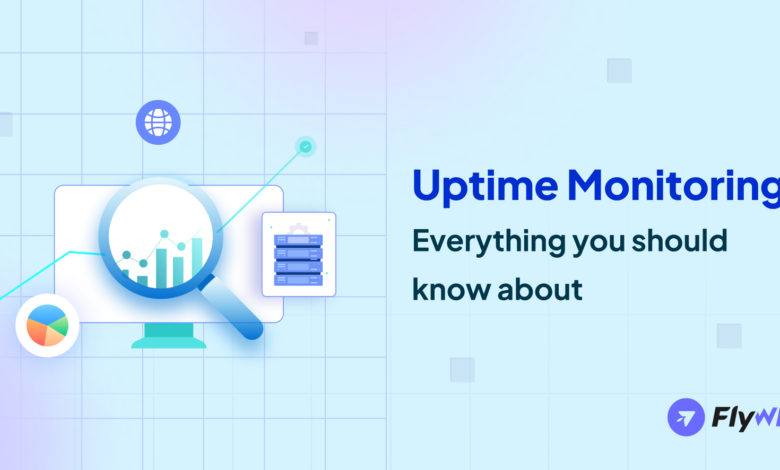Choosing the Right Uptime Monitor: What to Look For

In today’s fast-paced digital world, website downtime is not just an inconvenience, it’s a revenue killer. Whether you run an e-commerce store, SaaS application, or business website, consistent availability is critical. That’s why selecting the right Uptime monitor is one of the most important decisions a business can make for its online presence.
A good uptime monitoring tool does more than just alert you when your site goes down. It helps you track performance, maintain customer trust, and troubleshoot issues before they escalate. But with dozens of tools on the market, how do you choose the right one?
In this guide, we’ll break down the essential features, considerations, and questions to ask when selecting an uptime monitoring service for your website.
Why Uptime Monitoring Matters
Website uptime refers to the time your site is fully operational and accessible to users. Even a few minutes of unexpected downtime can:
Cost your business lost sales
Harm your SEO rankings
Damage brand credibility
Increase customer churn
Uptime monitoring tools continuously check your website (typically every minute) to ensure it’s running properly. If it detects downtime, it sends you alerts via email, SMS, or third-party integrations like Slack or Microsoft Teams.
This allows your team to act quickly, reduce the impact of the outage, and fix issues before users even notice.
Must-Have Features in an Uptime Monitor
When comparing monitoring tools, make sure they offer the features that match your business’s needs. Here are the key ones to consider:
1. Monitoring Frequency
The best tools check your site every 30 or 60 seconds. The more frequent the checks, the faster you’ll know if there’s a problem.
2. Multiple Check Locations
Choose a monitor that pings your website from multiple global locations. This helps you determine if an issue is local (affecting certain users) or global (site-wide).
3. Real-Time Alerts
Look for a tool that provides instant alerts via multiple channels. Customizable alert settings let you decide who gets notified and when.
4. Downtime Logging and Reports
A great uptime monitor provides detailed incident logs, uptime percentages, and response time trends. These insights help you identify recurring issues and make informed improvements.
5. SSL and Domain Expiry Checks
Advanced monitors also track SSL certificate validity and domain expiration dates important for site security and search engine trust.
Performance Monitoring Capabilities
While the core purpose of an uptime monitor is to detect downtime, some tools also track overall site performance:
Page load times
Server response speed
Resource bottlenecks
This information is valuable for optimizing user experience, especially for e-commerce or content-heavy websites.
User-Friendly Dashboard
A clean and intuitive dashboard can save time and improve team coordination. Look for a solution that offers:
Easy setup and integration
Clear visual graphs and metrics
Mobile-friendly access
Component breakdowns (for multi-service monitoring)
A complicated interface can lead to missed alerts or delayed response, defeating the purpose of having a monitor in the first place.
Integrations and APIs
Most teams already use tools like Slack, Jira, PagerDuty, or Microsoft Teams. The right Uptime monitor should integrate seamlessly with your existing tech stack.
APIs are also helpful if you need custom setups, reporting, or integration into your own dashboard or platform.
Scalability and Flexibility
As your business grows, so do your monitoring needs. Choose a tool that supports:
Monitoring multiple websites
Custom monitoring intervals
Multi-user access with role management
Private/public status pages
The more scalable the solution, the less you’ll need to switch tools in the future.
Support and Documentation
Even the best tools are only as useful as the support behind them. Check if the provider offers:
24/7 technical support
Live chat or email support options
Comprehensive documentation or knowledge base
Community forums or ticket systems
Strong support means quicker resolutions during critical incidents.
Cost and Value
Uptime monitoring tools come in both free and paid versions. While free tools may work for personal blogs or small websites, serious businesses should invest in a paid plan to get access to full features and reliability.
When comparing prices, consider:
Number of websites you can monitor
Frequency of checks
Number of users or alert contacts
Historical data retention
Additional features like SSL checks or custom branding
Paying a few dollars monthly for guaranteed uptime visibility can save you thousands in potential losses due to downtime.
Reputation and Reviews
Before committing to any tool, research its reputation:
Check online reviews
Look at case studies or testimonials
Explore community feedback
Try out a free trial or demo
A tool with high reliability and customer satisfaction is usually a safe bet.
Customization and Branding
Some businesses want to create branded public status pages or customize how alerts appear. Make sure your chosen monitor supports:
Custom logos and colors
Subdomain hosting for your status page
Incident categorization and messages
These small touches enhance professionalism and client communication.
Final Checklist Before You Decide
To summarize, here’s a quick checklist of what to look for:
Real-time monitoring (every minute)
Global check locations
Instant alerts (SMS, email, Slack)
SSL/domain expiration tracking
Performance monitoring (optional but useful)
Scalable for future growth
Status page availability
Simple setup and clean UI
Affordable pricing
Good reviews and customer support
Final Thoughts
Downtime can happen to any business but staying informed and ready makes all the difference. Choosing the right uptime monitoring tool is an investment in your website’s reliability, user experience, and long-term success.
Make sure the solution you choose covers your technical needs today and scales with you tomorrow. With the right uptime monitor, you’ll gain peace of mind knowing your site is always under watch.





